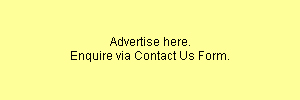The 1st thing to consider when buying the chiller is to make sure whether your tank size is suitable for the chiller. Always buy a chiller 1 step above the one you really need. If it's a 1/10hp, get a 1/6hp instead. We live in a climate where certain months are really hot and having a slightly over power chiller should help to over come this weather phenomenon. After clearing this hurdle would you go with the secondary consideration of whether your canister filter has the power to push water through the chiller.
As an added bonus to the question of purchasing a chiller, try to have your chiller modified to have an external temperature sensor attached to it, rather than using the internal temperature sensor that comes in stock configuration. Reason being, and it's a very big one, is that with an external temperature sensor, which will be placed in the tank itself, your chiller is not going to be relying on your canister filter performance or the ability to push a certain volume of water at a certain timing. With an external temperature sensor, the chiller is measuring the exact temperature of the water in the tank that's needed to be cooled. Once the whole tank water volume achieved the desired temperature, the chiller will switched off on it's own and sleep until it is awoken again when the water temperature rise to the cut off point that you set it.
If you use the stock configuration internal temperature sensor, you would have problem in getting the right pump to be used to push water to the chiller. No 2 set up are the same so your equipment to pump the water might not be strong enough or too powerful for the chiller. What will happen in this 2 cases? Simply know that the chiller will frequently switch on and off, on and off again so on and so forth. This will shorten the life span of the chiller. Why this happen, you might ask? It is because of the placement of the internal temperature sensor in the water compartment of the chiller. If the chilling power is faster than the water is able to carry it out of the chiller, due to an under powered pump, the sensor might have detected that the water is chilled and would halt the chiller to chill the water. As the water volume is being replaced by new water pushing in by the pump, the sensor will picked up this new warmer temperature and start the chiller again. The opposite happen when you have a powerful pump, in that the water travel too quickly for the chiller to chill the water, making the water although, slightly chilled but not chilled enough to cool the tank water volume.
Hope this helps!










 Reply With Quote
Reply With Quote


 My 1st 1 FT Cube Tank \
My 1st 1 FT Cube Tank \ 
Bookmarks